
Practice and Provider Resources
Since the HIV epidemic began in the 1980s, the United States has made great strides in reducing the number of annual perinatal infections. However, even one case of perinatal infection is too many. Women living with HIV who take antiretroviral medication during pregnancy as recommended can reduce the risk of transmitting HIV to their babies to 1% or less. Without treatment during pregnancy, risk of transmission from mother to infant is 22%.
One Test. Two Lives. offers obstetric providers information and resources to encourage them to test pregnant women for HIV infection and help reduce the number of infants born with HIV. The One Test. Two Lives. campaign has recently been updated to include the latest CDC recommendations regarding HIV prevention, testing, and treatment options. It now features new tools and resources to help ensure all patients get tested for HIV early in their pregnancy.
Information and Tools for Providers
These resources and tools have been developed to help obstetric providers encourage pregnant women to get tested for HIV as early as possible. The tools contain important HIV prevention messages and information to help raise awareness and encourage patients to get screened.
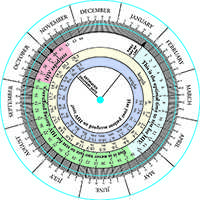
Due Date Projection Wheel (Printed, JPEG 739K)
This due date projection wheel is a tool commonly used among obstetricians and midwives. This version highlights the ideal time to test a pregnant woman for HIV and reminds that it is never too late to test for HIV.
To order the Due Date Projection Wheel, visit the CDC-INFO on Demand ordering system.
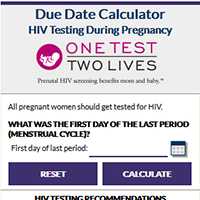
Due Date Calculator (Web Widget)
The One Test. Two Lives. Due Date Calculator provides the estimated date of delivery and gestational age based on the date of a woman’s last period. After 8 weeks, the calculator also provides the estimated length and weight of the baby. Most importantly, this tool highlights the ideal time to test a pregnant woman for HIV and provides reminders that it is never too late to test for HIV.
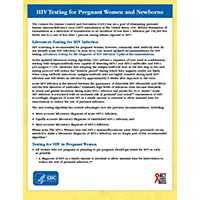
Fact Sheet: HIV Testing for Pregnant Women and Newborns
This fact sheet provides key information about antigen/antibody HIV tests and summarizes CDC’s new testing algorithm.
To order the HIV Testing for Pregnant Women and Newborns Fact Sheet, visit the CDC-INFO on Demand ordering system.
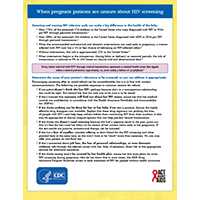
Fact Sheet: When Pregnant Patients Are Unsure About HIV Screening
This obstetric provider fact sheet gives obstetric providers recommendations and strategies to employ when pregnant patients are reluctant to participate in HIV screening.
To order the When Pregnant Patients Are Unsure About HIV Screening Fact Sheet, visit the CDC-INFO on Demand ordering system.
Practice Resources and Patient Materials
Share these resources with pregnant patients. Feel free to download the materials for clinical use or order materials from CDC-INFO on Demand free of charge. All patient materials are offered in English and Spanish.
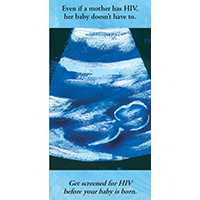
Patient Brochure: Even If a Mother Has HIV, Her Baby Doesn’t Have To
This patient brochure is an easy-to-read, brief patient education material about HIV and the benefits of prenatal HIV testing.
To order the Even If a Mother Has HIV, Her Baby Doesn’t Have To Brochure, visit the CDC-INFO on Demand ordering system.
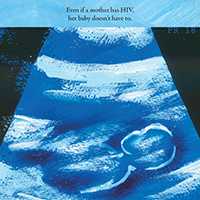
Poster: Even If a Mother Has HIV, Her Baby Doesn’t Have To
This poster encourages all pregnant patients to get an HIV test. The poster is double-sided, with English on one side and Spanish on the other.
To order the Even If a Mother Has HIV, Her Baby Doesn’t Have To Poster, visit the CDC-INFO on Demand ordering system.
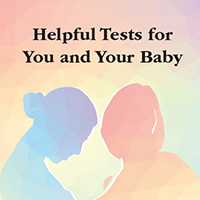
Handout: Helpful Tests for You and Your Baby
This handout provides pregnant women with a list and description of recommended tests all pregnant women should have, including the HIV test.
To order the Helpful Tests for You and Your Baby Handout, visit the CDC-INFO on Demand ordering system.
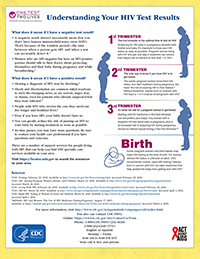
Fact Sheet: Understanding Your HIV Test Results [PDF – 877 KB]
This fact sheet helps pregnant patients understand their HIV test results. The fact sheet is double-sided with English on one side and Spanish on the other. Available for download in both regular and print-ready formats.
To order the Understanding Your HIV Test Results Fact Sheet, visit the CDC-INFO on Demand ordering system.
Additional Resources
The following list offers obstetric providers and their patients quick access to online resources related to HIV testing, treatment, and referrals for pregnant women.
For Providers
| Organization | Website | Services | Language |
|---|---|---|---|
| American Congress of Obstetricians and Gynecologists (ACOG) | www.acog.org | Testing and Treatment | English |
| American College of Nurse-Midwives (ACNM) | www.midwife.org | Testing and Treatment | English |
| Infectious Diseases Society of America’s HIV Medicine Association (HIVMA) | www.hivma.org | Treatment and Referral | English |
| National Perinatal HIV Consultation and Referral Service (Perinatal Hotline) (UCSF) | http://nccc.ucsf.edu/clinician- consultation/perinatal-hiv-aids/ |
Testing, Treatment, and Referral | English |
| University of California San Francisco (UCSF) | www.womenchildrenhiv.org | Testing and Treatment | English |
For Providers and Their Patients
| Organization | Website | Services | Language |
|---|---|---|---|
| Centers for Disease Control and Prevention (GetTested) | https://gettested.cdc.gov/ | Testing | English, Spanish |
| National Institute of Health (AIDSinfo) | https://aidsinfo.nih.gov/ | Treatment | English, Spanish |
| Centers for Disease Control and Prevention (CDC-INFO Contact Center) | https://www.cdc.gov/cdc-info/ | Testing, Treatment, and Referrals | English, Spanish |
| University of California San Francisco (HIVE) | http://www.hiveonline.org/ | Treatment and Referral | English |
Discrimination based on HIV is illegal. For more information, visit ada.gov/HIV.
- Page last reviewed: June 13, 2017
- Page last updated: June 13, 2017
- Content source:


 ShareCompartir
ShareCompartir